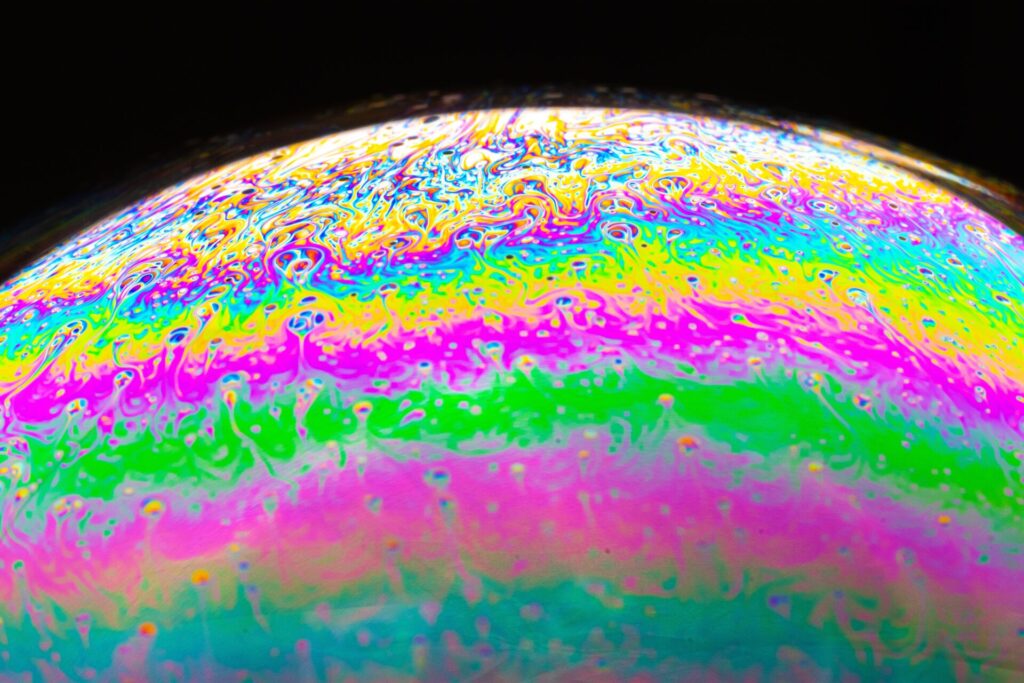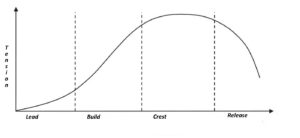Just finished Rich Kirkpatrick’s “Mindblown: Creative Insights from Science and Magic.” It’s a quick compendium of the scientific basis for creativity and the sociological reasons why being creative matters. And creativity does matter: to both our success and our sanity.
Have you ever wondered why there are so many more “negative” emotions than “positive” ones? We can feel all of it. The nearby Wheel of Emotions illustrates the ratio of “negatives” to “positives.”
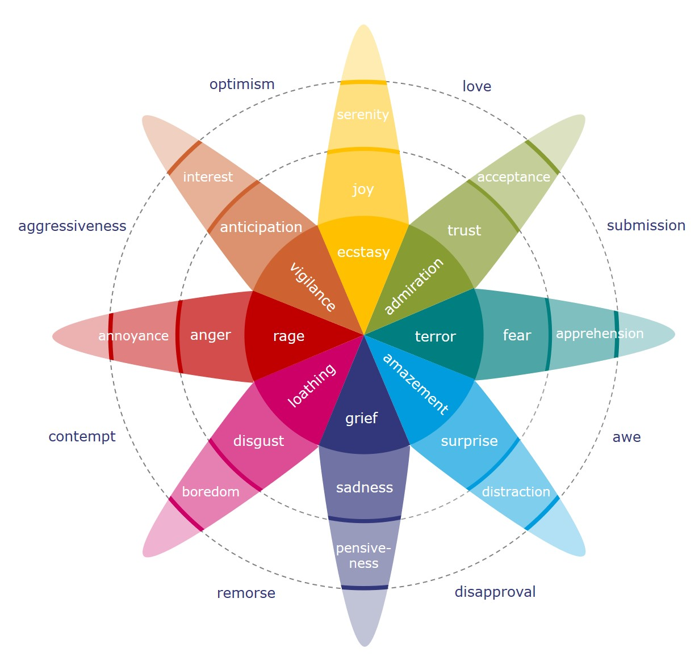
Question: if the highest-octane creative fuel comes from the tension of feelings we don’t like and yet produces the most sublime results, could we be doing it all wrong?
That is, instead of stuffing, ignoring, or manipulating our way into the sublimity with breath work, apps, sound baths, mind-altering substances (prescription or otherwise), brain spotting, meditation, therapies, or trauma-masking addictions, what would happen to our creativity if we truly embraced the suck, took the deep dive, walked the shadow journey, welcomed the ego death? Not just on paper or in our heads, but in real life, over and over, as a tool?
Don’t think I don’t get it: that would be painful. Grievous. Terrifying. Maddening. It’s not the joy, peace, and contentment we want. But stay with Science here for just a moment longer, and your mind will blow, too.
GIGO

If Kirkpatrick is right, and the engine of our creativity runs on all the ugly stuff we don’t like, the way Doc Brown’s second-generation DeLorean time machine runs on garbage, why do we spend so much time and treasure avoiding what we don’t want instead of using it for good?
Garbage in, goodness out? Defies logic, doesn’t it?
If all the creative juicy goodness we want is just waiting for us to alchemize it from garbage, and if our human systems are ideally designed to do this as Science seems to indicate, what the heck are we waiting for?
“I’m beginning to see the light,” Don George lyricized to music by Duke Ellington, Johnny Hodges, and Harry James, deep in the dark days of World War II, before the Atom Bomb, and during Adolf Hitler. Creatives see the light in the darkest darkness.
We talk about vulnerability, authenticity, resilience, emotional intelligence, mindset, neuroscience, alignment, immersion, engagement, and all those other 25-dollar words as if we understood them, but, like riding a bike or swimming, until we take off the training wheels or jump in the pool, none of that matters until it becomes our personal, holistic, lived experience, does it?
The Walk Into Darkness
Even the how-to in Kirkpatrick’s book is a little light on the real work we could be doing. Makes sense: who wants to be instructed to walk directly into darkness? On the other hand, that’s the mythological heroic walk we like to admire when others do it. Maybe it’s not quite so mythological after all but for you? For me?
What if that kind of creative edge was not just one good way but THE superior way? Don’t take my word for it: evidence for this notion abounds. Exhibit A: all the genius-level creatives throughout history. Were they outliers, messed-up artists, and eccentric geniuses? Yes, and they were also the foundational Creatives of all time. Maybe they had no choice other than the walk through the darkness, but I suspect they were following their bliss.
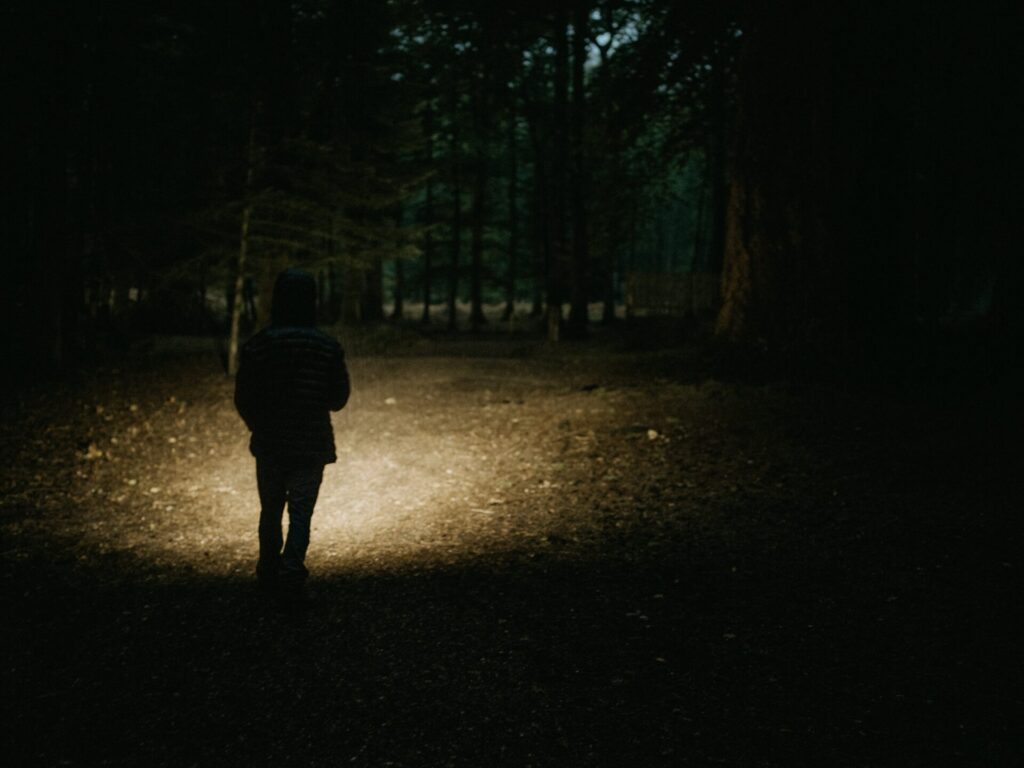
So let’s get down to it. What can we practice to open up our superior creativity? How do we practice a creative relationship with the parts of the Wheel of Emotions where the fuel is? Can we train for the dark walk before truly taking it? And the Big One: can we avoid feeling all the feels we don’t want?
The Big One
Let’s answer that big question first. Science indicates that the bigger the emotion we don’t want to feel, the better the creative output. Creativity is not for wimps, so deal with it. Feel something bold and bad, and feel it often. Let it carry you to its depths. It’s just a feeling, right? Brain chemistry. It will pass. And, as we’ve seen, you need to feel that bad if you want creative results. It’s unavoidable.
What’s the best practice for all these bad feelings? Hint: running and hiding is not the way, young grasshopper. The best practice would have to be something safe, powerful, and profound. It would have to move you more deeply than you’ve ever been moved before. Every time. And it would have to be a practice that you can repeat at will, that you could use to improve, that would entice you to mastery.

In addition to intentionally triggering your emotions, it would also have to work on your mentality (to psyche you out), your physicality (to make your skin crawl or spine tingle), and tickle all the other parts of you that Science can’t yet measure (consciousness or spirituality, for example). In short, a practice like that would have to be ineffable and, yes: maddening, terrifying, and grievous. And survivable.
The Practice
May I make a suggestion here? There is a way to take this purposeful dive, safely and practically, with increasing levels of depth, that’s also immediately self-adapting to your nascent but developing skills. It’s a practice you can use to set and trip your triggers reliably and survivably. It’s a practice you can use to release the good in the garbage.
In fact, if you’ve been listening to music, you’ve probably been passively aware of this practice for most of your life. Most of us don’t realize that part of the power of music is the practice of the dark journey, and that’s where I come in.
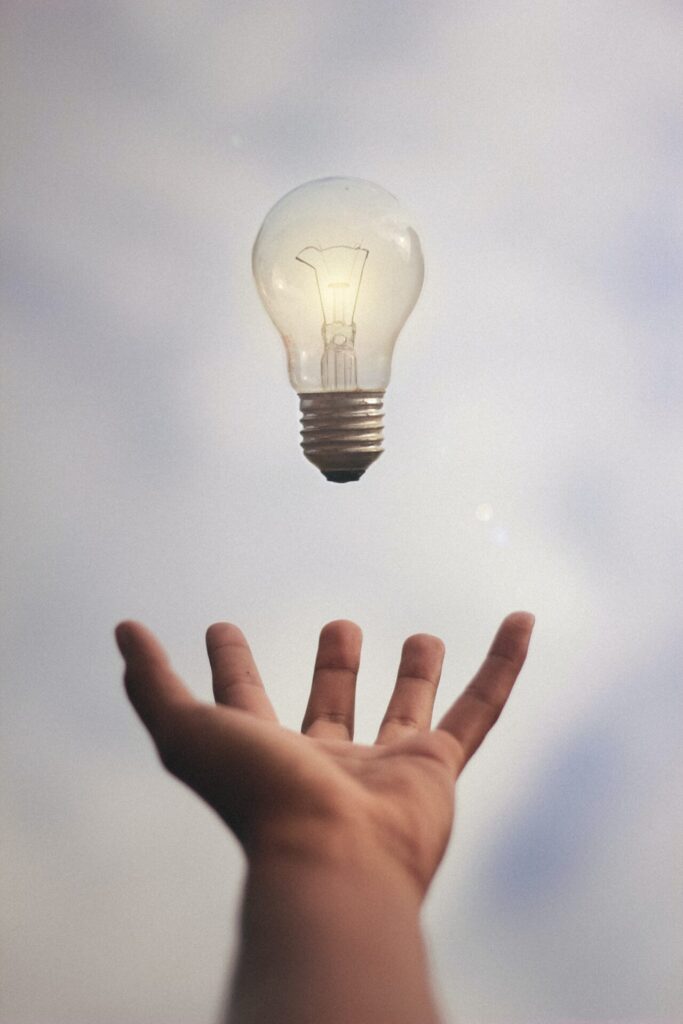
Thanks to some profound dark journeys and the music that’s minded me during them, plus a lifetime of paying attention and thirty years or so of modern scientific evidence, I’m happy to offer you the experience I’ve had in the form of an experiential journey that helps you discover your own GIGO (garbage in, goodness out) capability. If you’re brave enough, you can level up your creative capabilities exponentially. And, as Kirkpatrick points out, that mind-blowing counter-intuitive practice can release the wellness, contentment, joy, and creative capability you never knew you had.
Relationship Shop
Fortunately, a practice like that doesn’t exist in a vacuum. Your personal creative walk is something that other people can notice, and they will want to know how you do it. You’ll try to explain and fail because the journey is experiential, and until they have the experience, they won’t get the goodness. Then they’ll fret for a while, and finally, they’ll have the experience and get it, and you’ll have leveled up in that relationship as well as creatively. Relationship, they say, is everything, don’t you agree?
This practice goes on and on and touches everything, so I’ll stop here and let it soak. When you’re ready for action, let’s talk. Reach out to me at Quest.Musimorphic.com.
__________________________
Bill Protzmann has advocated for improved consciousness for over thirty years. With an understanding of music, you can build creative skills such as those discussed here: intuition, intention, and compassion. Learn more about this work at Musimorphic.com or reach out here.
